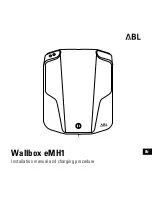
When slowing down, you can get
extra braking from the engine by
shifting to a lower gear. This extra
braking can help you maintain a safe
speed and prevent your brakes from
overheating while going down a
steep hill. Before downshifting,
make sure engine speed will not go
into the tachometer’s red zone in the
lower gear.
The manual transmission is
synchronized in all forward gears for
smooth operation. It has a lockout so
you cannot accidentally shift from
fifth to Reverse instead of sixth (see
page
) while the vehicle is
moving. When shifting up or down,
make sure you push the clutch pedal
down all the way, shift to the next
gear, and let the pedal up gradually.
When you are not shifting, do not
rest your foot on the clutch pedal.
This can cause your clutch to wear
out faster.
Come to a full stop before you shift
into Reverse. You can damage the
transmission by trying to shift into
Reverse with the vehicle moving.
Push down the clutch pedal, and
pause for a few seconds before
shifting into Reverse, or shift into
one of the forward gears for a
moment. This stops the gears so
they won’t ‘‘grind.’’
180
The engine can be damaged if
you inadvertently downshift into the
wrong gear (for example, going from
third gear at high rpms to second gear
instead of upshifting to fourth gear; the
rev limiter will not work in this situation).
6
-speed Manual Transmission
Driving
178
Note:
Rapid slowing or speeding-up
can cause loss of control on
slippery surfaces. If you crash,
you can be injured.
Use extra care when driving on
slippery surfaces.
















































